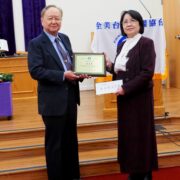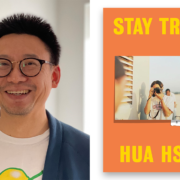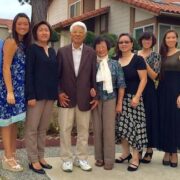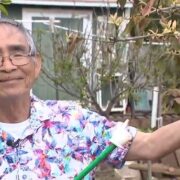Eighty Years-0ld Memoir: Born in Taiwan, from Japanese, Chinese, to American
Celebrities write autobiographies or memoirs. Even an ordinary Chinese (Ah Q) published a memoir. Born in Taiwan, from Japanese, Chinese to American, I felt I have to write my own account. If you ask me who I am, I will say a Taiwanese. This “80 years-old Memoir” records the joy and suffering I have experienced in my life. Hope it might be useful for future generations.
1) Primary school, high school and college (our house was bombed during 228 incident).
I was born in June 1935 at Number 195, Cheqichu, Liojiao District, Dongshi County, Tainan Prefecture, (台南州東石郡六腳庒溪墘厝195番地) Taiwan under Japan. It was a small village between Swantou and Town of Pozu (朴子). I was the third son of a land owner’s five sons and five daughters. My grandfather was a general who had fought the Japanese in the Qing Dynasty. He was called General Hou and claimed to have led 1000 soldiers. After their defeat by the Japanese, he fled to Fujian province, China. After his death his body was brought back to Cheqichu 溪墘厝. I heard that his coffin had to be carried perpendicular to the street when passing through streets of the Town of Pozu.
My father Haozan Hou (侯浩然) graduated from the highest education institute in Taiwan at that time in Taipei, the Normal College 國語學校. He worked at the Chiayi (嘉義) Branch of The Bank of Taiwan and met my mother Yumei Chou in Chiayi. She was the daughter of a land owner in Dongmen, Chiayi City, and was working as a telephone operator at the Telecommunication Bureau. At that time, this was considered a high class, fashionable profession. My parents fell in love and got married – they held a modern wedding ceremony in front of Pozu “Matsu Temple”. The first of its kind, “civilized wedding ceremony” in Donshi County (東石郡).
My two older brothers both attended Chia-Yi Senior High School, not easy for Taiwanese at that time. My two older sisters went to Chiayi Girls’ Senior High School and served as teachers at Swantou (蒜頭) Elementary School after graduation. During World War II, while I was in third grade, there were U.S. airstrikes almost every day. They always came at 8am, right on time. It was a 40-minute walk from my home to Swantou Elementary School, so my siblings and I would always walk slowly and wait for the airstrike warning siren. When we heard the warning, we would turn back towards home, and if we heard airplanes, we knew how to seek shelter in an empty road-side ditch and lie face-down. We once saw from a distance the Swantou Sugar Factory get blown up and burnt down by an air-raid, and once we saw a buffalo get blown up by airplane machine gun.
On August 15, 1945 Japan lost the war to America. We were very sad and disappointed, however, strangely I was told the next day that we won the war because we are Chinese. At that time, Taiwanese were more civilized and more educated than Chinese. I also saw a welcoming procession for the Chinese troops in the street of the Town of Pozu, and was disappointed to see Chinese soldiers wearing ugly cotton coat and grass sandals.
After the war, the schools started to teach Chinese and have us read Confucius’ Three Character Scripture (三字經). In 4th grade we started to learn Mandarin. My second older sister, who was a teacher, was sent to training on using the Zhuyin symbol system (Chinese alphabets) to learn Mandarin. At home she practiced sounds like, “ㄅ” (bo as in 玻 “glass”), “ㄆ” (po as in 撥 “splaying water”) – it sounded very funny. My father reacted quickly after the end of the war and took a special exam to enter the Three People’s Principles training class (organized by KMT/government). After the training in Taipei, he was placed in the Chiayi City Government as the Director of Public Affairs. So, when I was in the 5th grade the whole family moved to Chiayi city and I entered the Minzu (民族) Elementary School.
While the countryside kids were still learning Zhuyin (Chinese alphabets), the city kids had already moved on to study Chinese character textbooks. Reading Chongqing – The Second Capital of China on my first day to school, I was like a fish out of water. Even worse, when my homeroom teacher Mr. Kunwan Yan (嚴崑萬) introduced me as a new student, he added that I was “the chief of a grassland (草地級長).” From then on, my classmates loved to poke fun of me and humiliate me. At first only one classmate was friendly to me and protected me; later we became the best of friends. His name was Mr. Chengche Wei 韋正哲. He later went to military Academy and became the first Taiwanese general.
The frightful February 28 Incident (a civil uprising against government corruption) happened in the second half of my 5th grade. My uncle was shot dead, by Chinese troops from the mountain, and fell into a roadside ditch on his way back from shopping at Dongmen market. Because my father was in Taipei for business trip at that time, only my mother and siblings were at home. Our home was a Japanese-style house next door to the official residence of the President of Provincial Chiayi Industrial Professional High School. Eastward, in the direction towards the mountains were the official residences of Chinese Air Force officers.
The uprising forces (high school students and the people’s militia) rushed toward the Air Force Officers’ residences with weapons such as kitchen knives attached to bamboo sticks, unafraid of death. After trying to defend their Air Force Officers’ residences, the Chinese army was defeated and fled into the mountains. There was a large reservoir on the mountain – called Hongmaupi (紅毛埤also known as Lantan) and an ammunition depot.
Throughout this fighting, my family, covering ourselves under futons and bed covers, all hid in the dining room because the dining room walls were made of bricks and were more secure and safe. Suddenly there came a tremendous explosion – a mortar projectile had hit our house and crashed through the roof into the study room next door. Shrapnel tore in all directions. The Japanese paper door and furniture were all ruined. The one blessing amidst this terror was that no one in my family was hurt. The Chinese troops didn’t care at all about the lives of common people! My father rushed home and decided to evacuate us to and take refuge in the house of my second sister Lanya Lin’s (林蘭芽) husband in Xing Kang (新港). After several months, the uprising was defeated and we went back to our Chiayi house once the classes resumed at school.
One day, surprisingly we were let out early – the whole city was jittery with rumors that people would be executed in front of the train station. On my way back home, I saw parade of trucks with Chinese soldiers and their prisoners with their hands tied behind their backs on board. They were the representatives of the civil uprising who went to a meeting that was agreed upon by the Chinese army to negotiate a peaceful ending of the conflict, but were tricked and were arrested. These representatives did not actually participate in the uprising, they just happened to be the City Council members at that time. These so-called prisoners were brought and shot dead at the train station in front of the crowd without any civilized legal trial! It was terrible. I heard later that one representative Mr. Wen Su Lin, was released because he knew the Chinese way of doing business; he paid a big bribe in gold. One of prisoners shot was the father of my classmate Ying Ren Pan (潘英仁), a famous medical doctor Dr. Muchi Pan (潘木枝). My young heart was absolutely terrified. I didn’t understand law at all; all I knew was terror.
The White Terror period of martial law that followed was very terrible but fortunately I never had to look at it with my own eyes. Afterward, people didn’t dare to approach or make friends with the February 28 incident victims’ families. I was so naïve at the time, and my parents didn’t prevent me, so I was still friendly with Pan Ying Ren, he was also one of my high school soccer team members. Three of us soccer team members, Zu-Chia Liao (廖日嘉), Ying Ren Pan and me became best friends. We met at my house each morning (the closest house to school) and would walk to school and home again together. Our junior high school soccer team were the champions of Chiayi Prefecture every year. The three of us also represented Chia-Yi High School in the first national Taiwan Boy and Girl Scouts Camping Event at Beitou near Taipei.
In senior high school, besides continuing to play soccer (we were always the champions in Chiayi Prefecture. Photo #1), the three of us also joined the tennis team, and often got second or third place in the All-Taiwan Tennis Events. Zu Chia Liao was the president of one class and I was the president of another class. In the summer of junior year, I was selected to represent Chiayi High School in the first national summer combat training of the Chinese Youth Anti-Communist Salvation Corps. It was a marine combat training and was held at Zuoying Naval Base. Then we traveled on navy ship to visit Penghu, Kinmen, and Matsu, and received hospitality from the national army everywhere. When we returned to Keelung, the regiment commander Ching kuo Chiang (蔣經國Son of President Chiang Kai Shek) came to the ship to welcome us back. My junior and especially senior high school life was very active, though I still graduated as valedictorian of the class. (We had three valedictorians, one from each of the three classes because different teachers had different standard of grading). My classmates who were later active in politics included Tang San Chen (陳唐山) and Tong Ying Tsai (蔡同榮).
There is not much to say about my college years at National Taiwan University (NTU). Besides continuing to play tennis (Photo #2: Our university team was champion 5 consecutive years at the National Colleges Sports Event.) I also played soccer (I was a team member of the Faculty of Agriculture). After graduation from the NTU, I visited Ali Mountain (阿里山) with Yin Ren Pan before beginning my mandatory one-and-a-half-year military service. At the Ali Mountain hotel, I coincidentally ran into Ms. Manhua Chen, a sophomore history major at NTU. We fell in love and kept in contact while I was in the military. After she graduated from NTU, she served as teacher in the Taipei Municipal High School and then transferred to Chiayi Girl’s High School so that we could be married.
As for me, because I had received a scholarship from Taiwan Sugar Corporation, I was obligated to work for them for two years and was assigned to work at Nanjing Sugar Plant. I kept playing tennis as a member of the Chiayi Prefecture team and as captain of the Nanjing (南靖) Sugar Plant tennis team. I commuted by train every day from Chiayi to Nanjing. Every day after coming home from work, I still had time to ride my bicycle to the gate of Chiayi Girl’s High School to accompany my wife home. These were enviable and comfortable days for us as a young couple.
2) The Student Days at University of Tokyo (on the KMT Blacklist).
At that time, many young people in Taiwan struggled to find a career, so it became very popular to study abroad. It was very tempting to hear that many classmates passed the Government held “Study-Abroad Examination” and received an acceptance letter or scholarship from foreign countries universities. It was sad to see my classmates leaving, one by one for advanced study abroad. I consulted my wife about going abroad for a master’s degree (two years) and then returning back to Taiwan. She agreed, even though we had only been married for less than a year. Because my field was fermentation, and at that time Japan was more advanced in this field than the U.S. – especially the MSG (monosodium glutamate) ferment industry was on the rise – I decided to go to Japan. I asked my College classmate Yuh Shuan Huang (黃玉軒) who was already studying at the University of Tokyo Department of Agricultural Chemistry, to help me with my application. With his help, I obtained admission to study with Professor Saburo Funahashi (舟橋三郎) of the Department of Biochemistry.
I left my newlywed wife and carried my own Futon (棉被), a suitcase, two new watches and a basket of bananas and boarded a banana boat headed from Taiwan to Japan. I disembarked in Kobe harbor three days later. With a lot of baggage and broken Japanese, I struggled but managed to find the train from Kobe to Tokyo. I had a distant relative from Chiayi who was living in Tokyo, so for the first few days I stayed in his house. But he was not reliable.
With no money and no friends and in a strange place I found it was challenging to keep myself alive. I had heard that foreign students in the U.S. usually got part-time jobs (like dish washing in a restaurant) to pay their expenses, but I had no idea how foreign students in Japan supported themselves. Fortunately, the Taiwanese students at Tokyo University stuck together and mutually introduced work opportunities. My classmate Tsung Hui Huang (黄宗惠) from Chiayi introduced me to Hsiang-Kueng Chou (周祥庚, 東京華僑總會長, the president of the Tokyo Overseas Chinese Association) at his Pachinko shop in Ginza. There I worked as a part time clerk every day after school from 5 pm to 10 pm. Later I was transferred to his coffee shop in Ginza 4-Chome as an assistant manager (at night I stayed in that coffee shop and supervised the Japanese employees. I had no salary – just free room and board).
One year later, Professor Funabashi, who knew my situation and sympathized with the hardship of newlywed couple separation, tried to help me. He asked his friend’s company (Shiseido) to hire my wife Manhua as an employee, so she could apply for permission to leave Taiwan. At that time my wife had to stay in Taiwan like a hostage, and was not allowed to go abroad, for fear I would not return to Taiwan. When Manhua arrived, she found work as a tutor of Hsiang-Kueng Chou’s son. I too found work as an English and math teacher at a Japanese-run tuition school for Japanese high school students.
Life began to be more stable. I started to receive a monthly subscription to Taiwan Youth (台灣青年) magazine and was excited by the promotion of Taiwanese independence. I was elected as a committee member of the NTU Alumni Association (representing the NTU alumni in the Faculty of Agriculture of Tokyo University). We held monthly meetings hosted by the leader of the President of NTU Alumni in Japan, Mr. Kuan Min Ku (僑領辜寛敏he was a rich person in Japan), and always in a big hotel. Ninety percent of the committee members were Taiwan independence activists, and many were my classmates and good friends, such as Chao Tang Huang (黃昭堂) and Shei Kai Hsu (許世楷). There was only one committee member Chin Lin Huang (黃青林) controlled by the KMT (everyone knew). Although I thought I was politically neutral (because before I went abroad, my mother had repeatedly requested that I should not get involved in politics, a fear from the 228 Incident), the Chinese Embassy (KMT) still classified me as a Taiwan independence activist and put me on the blacklist. I didn’t know, but I soon found out about it.
The rich Taiwanese merchants in Japan and the President of Japan Taiwanese Association Mr. Yi Wen Lin (林以文) witnessed the hardship of Taiwanese students in Tokyo and established a scholarship for Taiwanese students in Tokyo (organized by the Japan Taiwanese Students Association). I applied for and was awarded the scholarship, but it was discontinued after only one year due to pressure from Chinese KMT Embassy. They thought this Student Association was controlled by Taiwan independence activists. Later, the KMT Embassy established a new scholarship and pressured these donors to donate to this new KMT scholarship. I applied for this new scholarship as well. Almost all those who applied (almost 100 students) got the scholarship, even those studying at the Institute for Buddhism. Yet I, a student with good grades at Tokyo University, was not awarded! This was how I found out I was on the blacklist.
In the beginning of October 1964, I was suddenly notified by the NTU Alumni Association of a meeting at a famous restaurant to discuss urgent and important matters. At the meeting, president Kuan Min Ku announced that he had received news from Taiwan that a famous world-known NTU professor Dr. Ming Meng Peng (彭明敏) and his two students had been arrested. Their crime was trying to distribute a pamphlet “Declaration of Taiwanese People’s Self-Liberation (台灣人民自救宣言).” That evening we discussed how to save them from being executed. They just wanted to promote the message of self-liberation for Taiwan. They were enacting their freedom of speech. Moreover, they had done nothing to incite armed rebellion – it should not have been a crime. The government was keeping this a secret; they didn’t want this to get out into the world. So, we decided to let the world know that Professor Peng had been arrested. We wrote a letter of dissent that was signed by everyone and would be handed over to the KMT Embassy in Japan the next day in the name of the NTU Alumni Association. We wanted to let the KMT government know that the world was watching them, to prevent them from secretly disposing of these three people. Once I signed the letter I knew there was no way I could wipe my name off the blacklist. But I still signed it.
Later, a friend introduced me to a Taiwanese lawyer to do translation work (Japanese to Chinese, for patent applications). This job paid well and I could arrange my own work hours. About the same time, Professor Funahashi, received a research grant from the U.S. Department of Agriculture for soybean-related research. He gave me 6000 Yen a month from this grant as a scholarship which was enough to cover my rent.
With life more secure, we soon had two daughters: Susan and Janey. It is not easy to raise children abroad for a first-time parent – you have to figure out everything for yourself. Manhua had to bear the whole responsibility of it. She had to wash diapers outdoors (at that time there were no paper diapers yet) which was especially hard during winter time. Although I knew how tough it was for her, I couldn’t help. I was very busy with school, two part-time jobs and one translation job. My wife was very understanding, she never complained or asked me to help.
One night we met with our friend Mr. You-Zen Huang (黃有仁, Chao Tang Huang’s fake name) on our way back from an evening dinner of the NTU Alumni Association. Manhua was pregnant with our second daughter, Chao Tang looked at her belly for a while and then told us with confidence that the second child would be a boy, he was good in these matters (he had three boys himself) and if we didn’t believe him, he would bet us. He said if it wasn’t a boy, he would wash one month of baby diapers for us, and if it was a boy, we had to treat him to a meal. The bet was set. In the end it was a girl, so he still owes us a month’s diaper washing. In 2008 he was a speaker at the big rally in front of the President’s Palace in Taipei. It happened that we were there as well. On our way back after the rally, we saw him sitting in a taxi waiting for a red light in front of NTU Hospital. I ran over to see him and after a brief exchange of greetings I brought up the bet and that he still owed us one month’s worth of diaper washing. We both burst out laughing. Sadly, he’s in heaven now, unreachable.
My friends from Tokyo University at that time included many Taiwan independent activists such as: Shi Kai HSu (許世楷classmate from Chiayi High School), Chao Tang Huang, Ying Ming Chou (周英明), Chun Ying Liao (廖春榮), Rong Bang Hou (侯榮邦), Kae Sihsu Lin (林啓旭a neighbor from my Chiayi hometown), and others. Before Manhua joined me in Tokyo, I was also invited to participate in the grand Japanese-style wedding ceremony of Fuk Chuan Luo (羅福全) and Tsing Fen Mao (毛清芬) in Tokyo. Fuk Chuan Luo was a classmate of mine in Chiayi middle school; because he was so tall, we gave him a nickname “Ali Mountain Holly Tree. (阿里山神木)” His mother was a sworn-sister of my mother, and Tsing Fen Mao was my distant relative and a classmate of Manhua in the History Department at NTU. No wonder I was on the KMT blacklist.
3) Planning options for post-graduation.
1n 1967, as my doctoral work was coming to a close, I began to think of my future options. I felt I should first go to the U.S. for further study before returning to Taiwan, so as was fashionable at the time, I applied for postdoctoral fellow positions at American universities. I was accepted by two institutions: the Ohio University Department of Chemistry and University of Wisconsin College of Pharmacy. It just so happened that the Associate Professor Michinori Nakamura in our laboratory had just returned from his sabbatical leave at University of Wisconsin. He highly recommended University of Wisconsin to me, so I accepted the postdoctoral fellowship offer from University of Wisconsin, Madison.
I then applied for a green card under the category of third priority immigrant qualification (for holders of a doctorate or special skill), with only six months wait time. The next headache was getting the KMT Embassy to endorse my passport for my trip to the States. I also wanted to go back to Taiwan with Manhua and our two daughters before our departure to the U.S. But as someone on the KMT’s blacklist, I knew it would be impossible.
One day in the spring of 1967 while eating lunch at the cafeteria of the Faculty of Agriculture, I ran into my classmate from the Department of Agricultural Economics Bingkun Chiang (江丙坤). Everyone knew he was an exchange student on the Dr. Sun Yat-Sen Scholarship, a KMT loyalist. Usually when we met, we would just smile and exchange casual greetings, but on this day I mustered my courage to tell him about my situation and ask for his help. He agreed at once to help me find a solution. Just two days later I received a call from counselor Yu (余參事) at the KMT Embassy, requesting to meet me. Of course, I agreed. When we met, I told him that I was about to graduate and wanted to go to the U.S. for further study. I asked what I should do if I wanted to visit Taiwan to see relatives before departure to the U.S.
Counselor Yu first wanted to know about my life in Tokyo. He said it must be difficult to raise a family while still studying and asked how I managed. I told him that besides being a student, I also had three part time jobs: 1) as a teacher at a Japanese tuition school teaching Japanese high school student, 2) as a tutor to a Chinese high school student, and 3) doing translation for patent applications. So, I was able to manage it. Then, he was curious about who is the student that I was tutoring. I told him he was the son of Mr. Chou Hsiangkeng (周祥庚), at his home in Jimbocho (originally Manhua had tutored him, but after she gave birth I took over). He was kind of puzzled and asked if this was the President of the Tokyo Overseas Chinese Association Mr. Chou? I answered yes.
As soon as counselor Yu heard this, his manner shifted 180 degrees (he knew that Chou Hsiangkeng was from Zhejiang Province, China and was the President of the Tokyo Overseas Chinese Association). He broke into a smile and said I would have no problem getting my passport endorsed to the U.S., and should go visit my parents and relatives in Taiwan first before going to the States. He also told me how to deal with the tremendous paper work in Taiwan for returning to Japan. The new procedures meant I only had to go to one location near NTU Hospital to apply. I wouldn’t need to begin by going to the military regiment district to apply. Counselor Yu repeatedly reminded me that the first thing I should do after returning to Taiwan was to obtain the departure permit to re-exit to a foreign country. I could get my departure permit in one or two days. I should only go south to see my family after obtaining my departure permit. He was so kind to me that I almost couldn’t believe it.
A few days later Bingkun Chiang (江丙坤) called me again and invited me to his home. He lived in a Chinese restaurant opened by his relatives in Asakusa. We chatted for a while and then he asked if I wanted to see Yanshi Chiang (農委會主委蔣彦士), the chairman of the Council of Agriculture. The Finance Minister Kuoding Li (財政部長李國鼎) and Yanshi Chiang were on their way back to Taiwan after a meeting in the States, and would pass through Tokyo next week. It was a great opportunity – I could ask about his path after graduation. Naturally I agreed and thanked him for making the arrangements.
A few days later I got a call from the Embassy inviting me for breakfast two days later at 8:00 AM at the Shinagawa Prince Hotel. That day, I waited for Mr. Chiang in the lobby and he brought me to the restaurant for breakfast. I told him that I was about to graduate and wasn’t sure what I should do after getting my Ph.D. Should I go back to Taiwan or go to the States? First, he told me about his own youth. He had also studied in the States, had a Ph.D. and returned to China, building up a foundation in the western frontier. He told me this was the best way for young people to build their own foundation. I told him I had two postdoctoral offers, so he recommended that I go to the U.S. for one or two years and then go back to Taiwan, and wanted me to keep in touch with him from now on. I said I was going to Taiwan to see family before departure and he said I could call him if there were any problems. Thus, we had a good breakfast meeting. After seeing counselor Yu and Yanshi Jiang, I finally felt I could safely go back to Taiwan (the incident of Wenqing Liu’s (柳文卿) forcible extradition to Taiwan happened at that time and was quite frightening).
4) Immigration to the States – University of Wisconsin.
I applied for a family green card at the U.S. embassy in Japan, and after confirming the date of issue of the green card would be the following spring, I took my family to visit Taiwan. We again got on a banana boat and arrived at the Keelung harbor three days later. Mine and Manhua’s families welcomed us at the harbor – seeing each other again was a truly emotional scene. Our daughters, Suchia (Susan 4 years-old) and Suchuan (Janey 2 years-old) could only speak Japanese, but fortunately our older generation relatives could also all speak Japanese. One month later I went back to Tokyo alone to wait for my green card while also doing postdoc research at University of Tokyo. Manhua and the girls stayed in Taiwan waiting for their green card from the U.S. Embassy.
Everything proceeded step by step as planned. I received the green card in March 1968 and went to the University of Wisconsin in April. The green card for Manhua and the girls was supposed to be ready at the same time in Taiwan, but some employees at the American Embassy in Taipei had developed corrupt habits and required some kind of bribe before they would issue a visa. It was clear that their visa was ready at the embassy, but they kept saying it was not there yet. In the end I had to ask my professor Dr. Perlman for help to get the U.S. Embassy in Japan to write to the U.S. Embassy in Taipei explaining that Manhua’s green card should have been ready along with my own. It was not until the end of June when the U.S. Embassy in Taipei finally reluctantly notified Manhua to come pick up the visa. Manhua brought the two girls (Suchia was ill at the time), bravely journeying to the U.S. to find her husband. Thinking back, it is really unimaginable.
Thinking back to that spring of 1968, I had but US$100 and spoke broken English; I relied entirely on my fearless youthful spirit to make my way to the U.S. Of course, I had many farewell parties from classmates, friends and professors. My classmate Shikai Hsu (許世楷) invited me to a night club in Shinjuku and introduced me to his friend Hongmao Tian (田弘茂) in Madison, Wisconsin. He said that I could ask him if I had any problem or needed help. I knew what he meant, though he did not mention about “Taiwan independent movement”. At the time, Dr. Yingming Chou (周烒明) and his wife along with others were all at University of Wisconsin – it was a major base for Taiwan Independence activists. The KMT government even specified that Taiwan students should not go or try to avoid the University of Wisconsin!
One day in Chiayi while was I back in Taiwan, the father of Chaomin Liu (劉兆民my high school and university classmate) made a special visit from Minxiong. He knew we were classmates at Chia-Yi High, and was envious that I already had a Ph.D. and two daughters. He asked me to “ask his son to get married soon”. I agreed to do my best. Chaomin Liu was studying for a Ph.D. in biochemistry at University of Wisconsin at the time when I arrived in Madison. He was the one who came to meet me at the airport. He helped and arranged me for to stay at the “People’s Commune.” The so-called “People’s Commune” (人民公社) was an old house kept up by University of Wisconsin students. We paid rent every month and cooked our own food. Chaoming Liu, Mingji Wu (吳明基) and I formed a team, taking turns to cook. I didn’t know why all the Taiwanese students called this place “People’s Commune”- it was quite entertaining. My roommate was an American – his girlfriend often came over, and when she did my roommate begged me to go out for two hours so they could have sex. This was an exciting new custom.
The surroundings of University of Wisconsin, Madison were really pretty; the city itself had three big lakes: Lake Mendota, Lake Monona, and Lake Waubesa, as well as beautiful parks like Vilas Park and Lake Wingra. The university’s botanical garden was full of many kinds of blossoms trees in the spring. I often saw beautiful girls wearing only bikinis sunbathing on campus and in parks, and couples kissing publicly on the grass. This was a true culture shock. My advisor was Professor Dave Perlman, Dean of the College of Pharmacy. He had transferred from a drug company, Squibb in Princeton, New Jersey to the university and was an expert in antibiotics. Because he was very famous, he paid lower salaries to postdocs than other professors. But it was still enough to support my family. Few Taiwanese students had cars then, but Chaoming Liu had an old car which could only go forwards and not reverse. We relied on it to go to the supermarket for groceries every week. Gas was only 12 cents a gallon – there was no talk whatsoever of fuel efficiency.
My friend Chichong Chen (陳志忠) and I met while we were both at Tokyo University. He came to University of Wisconsin three years before me. Because he was married with three children, he could live in a University family/student dormitory which seemed very comfortable and enviable to single students. When Manhua and the girls came to Wisconsin, we moved out of the “People’s Commune” and rented our own three-bedroom upstairs apartment near the university. We also bought a used car, a Buick Skylark. Chaomin Liu taught me how to drive, and once I had my license, we (my family) often went into the city down town or the suburbs to explore – a true American lifestyle. The girls were still only speaking Japanese and a little Taiwanese. 5-year-old Susie came home crying from her first day of kindergarten because she couldn’t understand anything.
The lake in the beautiful Vilas Park had a lot of little fish, called sun fish and blue gill. On weekends I brought the kids to the park to play or picnic, and I sat down fishing; the fish were about palm-sized. My record was 43 catches per hour. Sometimes even without bait I caught two fish on the hooks. Seeing the schools of fish under the water was crazy – so many fish! At home I had to clean the fish myself because Manhua only agreed to fry them. It was a great pleasure eating these fried fish with beer. We had so many fish that Manhua eventually refused to fry them, so I didn’t dare continue fishing. In the winter, the lake at Vilas Park froze over and we would all go ice skating.
For Chinese New Year the Taiwanese Students Association hosted a New Year’s party. After the party Dr. Yongming Chou (周烒明) usually invited us to his house for second party. Hongmao Tian (田弘茂) soon graduated and became an assistant professor at University of Wisconsin. He bought a house in the countryside and welcomed Taiwanese students to his house. The Taiwanese Students Association (blacklisted by the embassy) also organized camping trips in the summer. We brought our own tent and the kids loved it; they got along well playing with Chichong Chen’s kids. Our children are still in touch 40 years later.
I was one of the earlier postdoc fellows – there were only two postdocs from Taiwan. I attended the weddings of several Taiwanese students in Madison, including Chaomin Liu and Mingchi Wu.
As for work, I still had my vitality from my time in Japan. I went to work very early and even went back for experiments in the evening. The professor next door was Charlie Shih from China, the son of former Chinese Ambassador to the States. He was very intelligent – the youngest full professor ever at University of Wisconsin. He had many Taiwanese students, who would often run to me to complain about their boss; they said Professor Shih was like a task master and often scolded them in the public. He scolded them during seminars, embarrassing them to tears. Later, one of his students quit and transferred to another department to continue his studies. Professor Shih was very good to me because he knew I was a postdoc fellow and not a student. He knew his students complained to me, so he often explained that his actions were for the benefit of the students.
My research was in antibiotic-decomposing enzymes. A new antibiotic Actinomycin had high toxicity and couldn’t be used at that time. We wanted to reduce the toxicity of Actinomycin so it could be used on humans. As a result, I isolated and purified a new antibiotic-converting enzyme, peptide antibiotic lactonase, which opened one of the two lactones chains to become a mono lactone, thereby reducing the toxicity. I purified this new enzyme and studied its physical-chemical properties. My research paper was published in the top academic journal JBC. Because of this I was invited to the ninth World Chemotherapy Conference in Tokyo to give a lecture. During these one and a half years at University of Wisconsin, I published two important papers. My advisor Dr. Perlman was very happy with me. He continued to help me very much throughout my later academic life.
5) U.S. Department of Agriculture Northern Regional Research Laboratories.
Because of my excellent work, I received a research fellowship award from the U.S. National Academy of Science and was placed at the Northern Regional Research Laboratories of the USDA (U.S. Department of Agriculture) – called NRRL – for two years of service. In September 1969 I went to Peoria, Illinois to report to work. Peoria was a small town with only 150,000 population, yet it was the second largest city in Illinois, after Chicago. Peoria was also the headquarters of the world’s largest bulldozer company Caterpillar, located in between Chicago and St. Louis, on the soy and corn growing country of the Great Plains.
There were two Taiwanese NTU graduates living in Peoria at that time: Wenchen Wang (王文振Agrochemical Department) and Shunda Lin (林舜達Civil Engineering Department), both working for the Illinois state government, so at least there were some familiar faces. With the help of my classmates, we settled in quickly in Peoria. It was a small place with no events to go to, so our three families often gathered together. I taught everyone how to play Mahjong, and in the end, all six of us turned into Mahjong fanatics. Almost every weekend, we’d take turns offering our houses for Mahjong games that lasted long into the night. The two that were not playing would look after the three household’s six kids. In this way our two years in Peoria passed very quickly. Eight months before leaving Peoria we had our third daughter Nancy.
NRRL is a world-famous research institute, especially for microorganisms and fermentation. It is one of four research centers of the USDA. In 1938, the U.S. Congress authorized the Department of Agriculture to establish four major research institutes to research the processing and utilization of agricultural products produced in these various regions: East, West, South, and North. The Eastern Regional Research Laboratories (ERRL) is located in Philadelphia, Pennsylvania, specializing in the processing and utilization of dairy products, leather and other agricultural products. The Southern Regional Research Laboratories (SRRL) is located in New Orleans, Louisiana, specializing in the processing of cotton, tung oil, sugar beet, sunflower, and peanuts. The Western Regional Research Laboratories (WRRL) is located in Albany California, specializing in the processing of vegetables, fruits, and sea food. The Northern Regional Research Laboratories (NRRL) is located in Peoria, Illinois, specializing in research of wheat, corn, soybeans, microorganisms and fermentation. Peoria is an important town in the U.S. fermentation industry – the whisky produced there used to exceed half of all the whiskey produced nationwide.
Everyone knows Fleming discovered the antibiotic penicillin in 1930s, useful for treating all kinds of bacterial infected diseases. But yield of production was so low at the beginning that it was only used to treat important persons. During World War II, the U.S. Department of Defense had two secret projects – one was the Manhattan Project for research into the development of nuclear weapons. Everyone knows of the success of the Manhattan Project which brought victory to the U.S. (and the Allies) in the war over the Pacific. The second secret project of the Department of Defense was called the Penicillin Project, which took place at the NRRL in Peoria. The Department of Defense gathered Fleming’s British research team and American experts in fermentation and microorganisms and established a secret penicillin research team at the NRRL. It was forbidden for other people to visit the NRRL, and all letters to and from NRRL had to be opened and inspected (this system of letter surveillance continued through 1969, while I was serving there).
The Penicillin research team not only selected new mold species, but also improved the culture medium and culture method (developed a submerged culture from the traditional static surface culture). In addition to discovering new high-yield varieties, the most important discovery was a new raw material for cultivation. In an accidental experiment, a by-product from the production process of corn oil, which had less use and value in the local agricultural products market, was added. It was called corn steep liquor (CSL). For a then unknown reason, the liquid cultures that had CSL added increased their production yield by a thousand even ten thousand-fold (later it was discovered it was because CSL contains biotin). It was a breakthrough moment. The U.S. president ordered all large pharmaceutical companies to immediately go to the NRRL to learn how to produce penicillin. Once penicillin could be mass produced, it was used to treat wounded soldiers in battle. Allied Soldiers on the European front who received penicillin treatment could go back to the battlefield after just a couple weeks, but few injured German soldiers could return to battle. There is a saying about the war: penicillin won the war in Europe; nuclear bombs won the war in Asia.
In addition to mass-produced penicillin, NRRL scientists also invented an artificial blood thinner, dextran, which saved many soldiers in the Korean war. In the 1960s, they also discovered a famous viscosity enhancer (xanthan gum). This is a polysaccharide produced by microbial fermentation which enhances the viscosity of liquids and is widely used in food, medical and petroleum industries. They also invented products with high water absorption which were widely used in diapers. These important inventions of the NRRL led to its promotion in 1992 as the National Center for Agricultural Utilization Research, called NCAUR. No longer was it a regional research center concentrating solely on agriculture. The site of the Peoria Laboratory (NCAUR) was also designated as a National Chemistry Historical Site in 1992.
Back to my research work, I was assigned to conduct research on microbial toxins (mycotoxins) in the fermentation laboratory. Broadly speaking, antibiotics are also a kind of mycotoxin, it is just that their toxicity is low enough to humans that they can be used for human disease treatment. True mycotoxins will kill people. These mycotoxins, such as aflatoxin, are generally found in moldy agricultural products. I worked harder than the average American, so in two years at NRRL, I discovered two new kinds of mycotoxins: trimotin and tricotoxins, and published five scientific papers. I also applied for and was awarded a U.S. patent, and was invited to give a keynote speech at the U.S.-Japan Natural Resources Collaboration (UJNR) meeting held in Salt Lake City, Utah in 1970. This was quite a successful research outcome. NRRL wanted to formally retain me, however because I was not yet a U.S. citizen I couldn’t be hired by the federal government (I was only three and a half years into my five-year green card). So, in 1971 at the end of the two years NSF Award, I began searching for a job for the first time in the U.S.
6) First-Time Job hunting – EXXON Research Center.
My colleagues at NRRL and former professor Dr. Perlman were all very helpful in my job search; I landed three positions all at once: University of North Carolina, Raleigh, a small pharmaceutical company in California, and at the research headquarters of the world’s largest oil company ESSO (Standard Oil) in New Jersey. After consulting with my former professor, I decided to accept the position at the oil company and moved to the small town of Linden in New Jersey near New York City.
The ESSO Corporate Research Center had just established a biosciences group three years prior, led by Dr. Al Laskin (he was my Professor Perlman’s subordinate at Squibb pharmaceuticals Company). I was at ESSO research center for only a year when the company decided to change its name to EXXON in order to be able to operate uniformly in the US (branches abroad continued to go by ESSO). Not long ago, because Standard Oil (ESSO) was too big, the U.S. Congress passed an “Antitrust Law” and forced ESSO to split into six smaller companies. The mother company was still called ESSO, and the other split off companies located throughout the States were Standard Oil New York (Mobil); Standard Oil Ohio (Sohio); Standard Oil Indiana (Amoco); Standard Oil California (Chevron) etc.
ESSO at the time was very rich and had no expectation that the biosciences group would make any money for them. The company thus encouraged us to conduct long-term general research, and to publish many papers which would give the company a good public image. We could participate in any scientific conferences within the country (for conferences abroad we had to get permission in advance). This was a scientist’s dream job.
The primary research concern of oil companies was of chemical catalysts. Our research group was looking for biocatalytic reactions (enzymes, biocatalysts). We focused especially on the role of metal in the reaction mechanism of metal-containing enzymes, such as the oxygen-handling enzyme oxygenase. Soon I purified and crystalized an oxygenase and published the work. My research soon caught up to the level of that of the father of oxygenase, Professor Osamu Hayaishi at Kyoto University. He even made a special trip to Linden NJ to see me.
Later, my research shifted towards petrochemical manufacturing, using a special microorganism called Methanotrophs to convert ethylene and propylene into ethylene oxide and propylene oxide, important petrochemical products. These discoveries led to me attaining 12 U.S. patents and becoming the team leader. In 1984 I published a book on the topic called Methylotrophy: Microbiology, Biochemistry and Genetics. The book was published by one of the large scientific publishers, CRC. We became the world’s leading team in the field of petroleum microbiology and biocatalysis. I continued to take part in international and national yearly conferences and organized seminars. Thus, I became a very active member of the American Society for Microbiology and Society for Industrial Microbiology. I made a lot of friends, which was also helpful for my later research career.
7) Invited to Participate in the Taiwan National Development Council – Secret informer by a Chinese Professor.
In 1983 I was invited by the Taiwanese Government to participate a meeting in Taiwan, their National Development Conference. Before the Conference date, a Chinese professor at the Food Sciences Department of Rutgers University sent a letter to the Vice President of EXXON stating that “your employee Dr. Ching T Hou has been secretly invited by Taiwanese Government to participate in its National Development Conference and would disclose company secrets.” The Chinese professor suggested that EXXON should investigate.
Fortunately, I had mentioned the invitation to my director before I accepted it and he had given me the permission to go ahead. The director called me to his office saying that someone had sent a letter calling for investigation of this matter. He even gave me a copy of the letter (with the name and department of the sender deleted). I was shocked. My director said because I had notified him in advance there was no problem and he would explain this to his higher ups. He wanted me to keep a low profile during the conference and not to appear on the news so that we could get through this risk-free. I never thought a Chinese professor from Taiwan would do this kind of cold-blooded act. In the end the National Development Conference passed successfully without incident; we recommended the government establish a biotechnology research institute. An institute was indeed established the following year: a legal consortium called “Biotechnology Development Center” with Weicheng Tian (田尉成) as CEO and Yanshi Chiang (蔣彦士) as chairman of the Board.
During the 1970s, oil companies profited greatly from the first and second energy crises due to so-called windfall profit. While our salaries kept rising, oil companies became the target of attacks by people. But starting in 1982, the oil industry entered an unfavorable economic period and there were layoffs. This was the first time I heard of such a thing.
8) Second-Time Job Hunting – Squibb Institute for Medical Research.
Having been educated in Japan, I thought that employment was guaranteed – a life-time employment system, how could there be layoffs? It didn’t make sense. At first it was many chemical engineers that were laid off, later it was other kind of engineers and chemists. By the 1986 round of layoffs, it affected the whole company, including the biosciences group. One by one, members of my team were sadly released, until it was only me and two or three others left. So, I had to start looking for a job. After a couple months of frustration, Dr. Sykes, the vice president of Squibb Institute of Medical Research, a major pharmaceutical company in Princeton, called me to have an interview. At that time, I was attending an international conference in Beijing (The President of the Chinese Academy of Science Jiaxi Lu 盧嘉錫 hosted a banquet for foreign scholars in the Great Hall of the People). When I came back, my secretary told me about this call. So, I quickly return his call and made an appointment.
Squibb hired me as the Department Director of Natural Products, managing a team of close to 40 staff searching for new drugs. In hindsight I see that EXXON treated me quite well; because I was over 50 years-old and had over 15 years of service, they gave me the option of early retirement which I took. This Exxon retiree status was really helpful for my family moving forwards. Because EXXON health insurance plan is better than those from pharmaceutical companies and from the government, we still are on their plan up to this day.
The operations at Squibb Medical Research Institute were completely different from those at EXXON. The later did not rely on us to make money, so the environment was quite free and publication of research results were encouraged. The former, though, had money-making as its goal – the financial future of the company relied on whether my department could come up with new drugs. Pressure was high. Every Wednesday at 8 AM we had Directors meeting; the four Department Directors met in the office of the Vice President.
I remember one Director’s meeting two months after I started, the Vice President said that today we would like to discuss your Department. I said I had just arrived and didn’t have much to talk about. Then he told me that I had three “dead wood” in my Department. This word “dead wood” was the first time I heard that term in my life. He said these three employees (all had Ph.Ds. and two of them were group leaders) were in the age range of 55-60 and no longer very productive. If I fired them, I could hire 6 new bloods. “New blood” was another new term to me. I said they hadn’t done anything wrong and there was no reason for us to fire them.
The Vice President then taught me how to fire employees – how despicable! In his words, the first step was to take the employees’ assistants away, leave him alone to do research work. The second step was to move him to another laboratory, he will be busy setting up his new lab. This way he would certainly not perform well. If after making life hard for him and he still does not quit, then I should pull them away from research and assign him to serve in the library working as reference literature searcher. At this point any scientist would feel humiliated and quit.
I told my Vice President that I would consider it, but didn’t act at all. I understood that these three old guys were friends of my old supervisor Al Laskin at EXXON. After I joined Squibb, they waited for me every day to have lunch together, talking over family matters, etc. One of them had married late and his child was just starting college – he complained to me about the expensive tuition. How could I force him to quit? The other one was even more desperate. He told me he had been a bomber on a U.S Air Force during WWII and had bombed Taiwan for several months. He asked me where I was at that time. I didn’t answer this question for at that time I had been hiding in roadside ditches at the sound of his bomber airplanes on my way to school.
Unlike an oil company like EXXON, Squibb did not allow scientists to write papers for publication during work hours. The priority was always to do research, to find new drugs and to apply for patents. Only after obtaining patents, could the scientist use his own time at home to write research papers for publication. I felt disappointed when I compared my current situation to my earlier time at the oil company and at a university. I also had to submit a year-end report summarizing the research accomplishments to the president. Essentially it was telling the president and the company big shots that although we don’t have new drug now, we do have a lot of “potential new drugs” in the “pipeline”; it felt like pandering to the wolves.
I lived like this for two years but began to fear for my position. If we could talk about how to force out scientists in the Directors’ weekly meeting, couldn’t they also talk about how to force out Directors in the Vice Presidents’ monthly meeting? So, I started to look for a job with the federal government.
9) Return to the National Center for Agricultural Utilization Research at Age 53.
I still had a lot of friends at the NRRL; as soon as they heard I was job-hunting; they created a new position for me. However, Congress would have to approve the new annual budget (including this position) before it actually existed. As soon as the Congress passed the new year’s budget, I applied for the position and was hired. So, in 1989, I returned to Peoria after nearly 20 years. The position was Lead Scientist in Oleo Chemistry Group. Our team had five Ph.D. scientists, four assistants, two postdoc fellows and two college summer students. It was a small research team. The research environment here was much freer than in the pharmaceutical company, about the same as it was at the oil company. I decided on my own research topics, and was required to write one small year-end report from the team, mostly focused on the number of publications.
My research goal was using biocatalysts to develop new products and find new uses for soybean oil. This was a new field of research, and before long I discovered a new oxygenated fatty acid. This kind of newly discovered fatty acid was a natural defense mechanism in plants to protect against mold. It had antibacterial and antifungal applications. My research team became the pioneers in this field of study.
I began to be very active in professional societies during this time. In addition to participating in activities of the American Society for Microbiology, the American Society for Industrial Microbiology, and the American Chemical Society, and organizing seminars for them, I also joined the American Oil Chemists’ Society (AOCS). Because my work was on finding new uses for soybean oil, AOCS gradually became my primary academic society.
Starting in 1992 I organized two yearly seminars on biocatalysts for the AOCS annual meeting. This year (2014) was my 23rd year of conducting biocatalysis annual seminars for them. Because of my connections in both academia and industry, starting from 1994 my annual AOCS biocatalysis seminars always received financial sponsorship from industries, making it very easy to hold these seminars continuously for 23 years. Every year I invited 18 distinguished professors or company R&D managers from around the world to give talks which was a good way of making many new friends.
Additionally, starting from 1994, I used some of the company donations to invite guest speakers to an annual dinner party. In these 20 years I have hosted 40 to 70 dinner guests each year. These dinners have been good networking and career building opportunities for these guests. Attendees who were not already well known, have become renown in their own countries; companies are more likely to give them research funding and send employees to study in their laboratory. My Biocatalysis Seminar friends are spread all around the world, especially in Taiwan, Japan, and Korea. Over the years these people have gradually risen up to become Directors of national research centers, chairmen of graduate schools, or college presidents.
In 1999 I was selected as one of the six American delegates to represent the USDA to the United States-Japan Natural Resources Collaboration Panels. I was on the Food and Agriculture Panel of UJNR. This panel consisted of 6 panel members from USDA and 6 panel members from Japan Ministry of Agriculture, Forestry and Fisheries. These two countries take turn each year hosting the Panel Meeting. Each of the panel member chaired a specific area of science and can invite up to four scientists to participate in the annual meeting. This gave me opportunity to expand my friend base. I served as UJNR U.S side panel member from 1999 to present. Interestingly enough, the chief of the Japanese panel in 1999 was Dr. Hajime Taniguchi who was my classmate and good friend at Tokyo University. We had not met for many years and now unexpectedly encountered each other in this kind of setting. We took a picture to commemorate this rare moment: he, a Japanese representative and I, a U.S. representative, each standing under our large national flags (photo #3).
10) Start of involvement in Academia in Taiwan – Creation of the International Society of Biocatalysis and Agricultural Biotechnology .
In 1998, I was appointed as an advisory committee member of Academia Sinica’s newly established Agricultural Biotechnology Research Center (1998-2001), and was frequently invited as a speaker at National Taiwan University, Academia Sinica, and National Taiwan Ocean University. In 2004, Dr. Jei-fu Shaw (蕭介夫) was promoted from Director of Academia Sinica’s Institute of Plant and Microbial Biology to the President of National Chung Hsing University (NCHU), and he invited me to Taipei to discuss how to increase the international visibility of the University. This was one of his promises to NCHU when he accepted the appointment. After long discussion, we came to the conclusion that holding a large-scale international conference was the best option. But to invite renown senior professors from around the world to participate was not so simple. In addition to covering travel expenses and lodgings for each invited speaker, we would also have to provide honorarium; in total each speaker would cost US$3,000 or more. President Shaw said his university could not afford this much money. I thought, perhaps I could use my personal connections to persuade around 20-30 senior professors to come on their own expense.
I asked him if I took responsibility in inviting international distinguished professors, could Chung Hsing University provide a one-day of study bus tour for them? He said this was easy, the University could cover this expense. So, the two of us decided to hold an International Symposium of Biocatalysis and Biotechnology (ISBB) in 2005. I felt I could take advantage of the United States-Japan Natural Resources Collaboration (UJNR) panel meeting to be held in Tokyo in October that year, and set the middle of October as the starting date of our international conference ISBB, to coordinate with UJNR meeting date.
For the UJNR, the U.S. side brought around 30 scientists each year (panel members plus invited speakers) to Japan to attend. I took advantage of this opportunity to lobby the American UJNR participants to come to Taiwan first for the ISBB conference at NCHU before going to the yearly UJNR meeting on one trip. Many of the USDA side UJNR participants accepted my ISBB invitation, including National Research Projects Leader of the USDA Headquarters, and Center Directors, making a total of seventeen. In addition, friends from three national scientific societies (American Society for Microbiology, the Society for Industrial Microbiology, and the American Oil Chemists’ Society), as well as several authors of a book I had just published (Handbook of Industrial Biocatalysis, Photo #4), decided to attend, bringing a total of 31 senior scientists from all over the world to participate in the first ISBB. In the end, the ISBB Conference was very successful and its success reverberated across academic circles in Taiwan. After the conference, we published a book called Biocatalysis and Biotechnology: Functional Food and Industrial Products.
In the following spring, I invited was invited to speak in a small academic seminar at NTU. There were only 4 or 5 invited speakers from abroad. At the evening welcome dinner, my wife Mandy and I were seated at the main table along with the NTU President Sichun Li (李嗣涔) and the Dean of Academic Affairs. President Li asked me, “I heard that the tiny Chung Hsing University held a large international conference last year which was arranged by you. Did you graduate from there?” I responded “No, I am a graduate of NTU from Agriculture Chemistry Department.” He said, “Then why did you help Chung Hsing University? Shouldn’t you help NTU hold an international conference?” I said, “I graduated from NTU in 1953, but the President of NCHU is my good friend.” He then said, “I was born in 1953!” How young he was!
Because the ISBB conference was so successful, we started to organize it annually. The keynote speakers included: President of Academia Sinica Dr. Qihui Weng (翁啓惠), President Undenkuff of University of California, Davis, Vice President of Academia Sinica Dr. Andrew Wang (王惠鈞), Director of Japan’s National Food Research Institute Kiyoshi Hayashi, Director of Korea National Food Research Institute Suk Hoo Yoon, and others. We continued to publish post-conference books.
At the second ISBB conference at NCHU, I proposed to establish a new society, the “International Society of Biocatalysis and Biotechnology”, and all the participants agreed. I was then elected as the society president, Jei-Fu Shaw as the vice president. Directors were chosen from each represented country. In this way, we had our own academic society, the first international academic society established in Taiwan and located at NCHU.
After three years of holding the conference at NCHU in Taichung city, we moved the fourth one to Academia Sinica at Nang Kang, Taipei. The unique aspect of this conference is that all the speakers are invited, and all are senior scientists. The number of participants increased each year and from the fourth year on reached the maximum conference capacity of about 70 speakers. From the fourth year onwards, the Asian branch of the American Oil Chemist’s Society (AOCS) also requested to join the conference, so it became even more lively.
The fifth conference was again held at NCHU in Taichung city. The Directors decided that instead of publishing post-conference books, we should launch our own scientific journal for our society. The ISBB President, that was me, should take the responsibility to create a new journal. Creating a new scientific journal is not easy and will be described later.
Because we were an international society, the ISBB Directors also decided that the participating countries should take turns hosting the annual meeting. So, the sixth annual meeting was held in Korea at the famous Seoul National University, organized by the Director of Korea National Food Research Institute Dr. Suk Hoo Yoon. The seventh annual meeting was held at Kyoto University, Kyoto, Japan organized by Professor Jun Ogawa. At the Directors meeting, the directors decided to add the word “agriculture” on our society’s name, thus establishing “International Society of Biocatalysis and Agricultural Biotechnology.”
The eighth annual meeting was held in Sonoma Valley, California, USA co-organized by Dr. Thomas McKeon of USDA and Professor Randall Weselake of the University of Alberta, Canada (with a record-breaking 120 invited speakers, photo #5). The ninth annual meeting was held in the hot springs resort of Piestany in the Slovak Republic, Europe, organized by Professor Milan Certik of the Slovak University of Technology. The tenth annual meeting was originally scheduled to be held at Hokkaido University in Sapporo, Japan, but because the number 10 has special meaning in Asia, President Shaw of I-Shou University invited us back to the birthplace of the society, Taiwan. So, the Board of Directors resolved that the tenth annual conference would be held in Kaohsiung at I-Shou University (Oct 28 – 30, 2014, photo #6). The 11th annual meeting was held in Banff, Canada (September 2015), organized by Senior Professor Randall Weselake of the University of Alberta.
I am the founding President and have served as President for 10 years; the operation and growth of the society has been quite successful.
11) Established a new science Journal BAB (Biocatalysis and Agricultural Biotechnology).
With the goal of establishing a new science journal, I contacted several publishers as soon as I received the Board of Directors’ directive. However, publishing a new journal from scratch is not easy. I kept hitting walls with many publishers until I asked an acquaintance to introduce me to Anthony Newman, the manager of Elsevier, one of the world’s three largest publishing houses.
Mr. Newman said it was very difficult to start a new science journal but was willing to help us out and give it a try. I told him that our society, ISBB, had a strong presence in the Pacific rim countries, which impressed him. He said if we collaborated with Europe that would include the whole world. So, he proposed that we collaborate for one to two years with an existing Elsevier European journal, New Biotechnology (the official journal of the European Union of Biotechnology Societies) as “ISBB Special Issues”. We would reassess the results after a two-year trial to decide our next move. He also wanted to visit to my office in person; if he was satisfied, he would sign a contract with me.
One month later he visited me and was deeply impressed by my working at the world-famous National Center for Agricultural Utilization Research. We agreed to the contract and signed immediately. Our Society finally had its own journal (though it was temporarily under someone else). I served as Editor-in-Chief of Special Issues and appointed around 20 editors to form our own editorial team. Now, we were open for business.
In those two years we published eight issues. The scientific quality of our published papers was even higher than the host journal New Biotechnology (we helped increase its impact factor). After two years, when we requested to separate from the host journal to become an independent new journal “ISBAB”– Elsevier agreed. Our official name became Journal of Biocatalysis and Agricultural Biotechnology (known as BAB, photo #7). Mr. Newman came again to my office in Peoria and brought with him the formal contract. I signed my name representing ISBAB and on Jan 1, 2012 the journal officially launched. I continued on as Editor-in-Chief with all my original editorial members and editorial advisors. As of today (Oct 2014), we publish four volumes every year. Because the number of paper submissions have increased recently, I appointed four more editors. Our hope is to gradually shift from a quarterly journal to a bimonthly journal and finally a monthly journal.
12) Conclusion.
In 2003, Yang Hsiangfa (楊祥發), the Vice President of Academia Sinica, and five other Academicians of Academia Sinica nominated me as a candidate for Academician of Academia Sinica. I asked my friend, Academician Shutsung Liao (廖述宗) to be one of the five required nominators. But when I met with Professor Liao in Chicago, he told me that if I added his name as nominator, I certainly would not be elected, because he was on the KMT’s Taiwan independent activists Black List. Two of my nominators suggested that I should socialize more with other Chinese Academicians, otherwise I wouldn’t obtain the required 50% of the votes because more than 80% of the Academicians in Academia Sinica were Chinese. There were younger and less qualified scientists who had already been awarded as Academician so I felt there was no need to campaign for this. In the end I lost. I no longer have any interest in running for Academician of Academia Sinica.
My work is going smoothly; though I do not have the human resources of a university professor (no graduate students or postdoc fellows, the so-called cheap labor), I have published over 240 academic papers and seven academic books, and I have 17 U.S. patents (photo #8). In 2012, I was invited to be the keynote speaker at the annual meeting of the World Oleochemicals Conference (held in Nagasaki, Japan). In 2013, I was invited to give lectures at Jinan University in Guangzhou, Guangdong Academy of Agricultural Sciences, and the University of South China. I was also invited to give lectures at the National Biotechnology Conference in Saigon, Vietnam. This year, 2014, starting on Oct 1st, Rich Melton Dulay of the University of Central Luzon in the Philippines, the winner of the American Fulbright Scholar Award, has chosen to conduct his award-winning research work in my laboratory.
Over my long career I have achieved the following notable positions and/or titles:
Fellow of the American Society for Industrial Microbiology (1994)
Fellow of the American Academy of Microbiology (1996)
Fellow of the American Oil Chemists’ Society (2006)
The first foreign fellow of the Japanese Oil Chemist’ Society (2011)
Fellow of the International Society of Biocatalysis and Agricultural Biotechnology (2011)
President of the International Society of Biocatalysis and Agricultural Biotechnology (ISBAB)
Editor-in-Chief of BAB academic journal (Biocatalysis and Agricultural Biotechnology)
I am also a member of National Chung Hsing University School Affairs Advisory Committee from 2005-present, Yuanzhe Li (李遠哲, Novel laureate) is the chairman (photo #9), and a Chair Professor of NCHU (2007-present), as well as a life-time Chair Professor of National Pingtung University of Science and Technology.
I am almost 80 years-old now, but have not yet retired. I am still working at the USDA National Center for Agricultural Utilization Research. I am active in academia and enjoying my life.
Finally, I want to thank my dear wife Manhua who has looked after the children and the family, as well as my health, so that I can devote myself fully to my career.
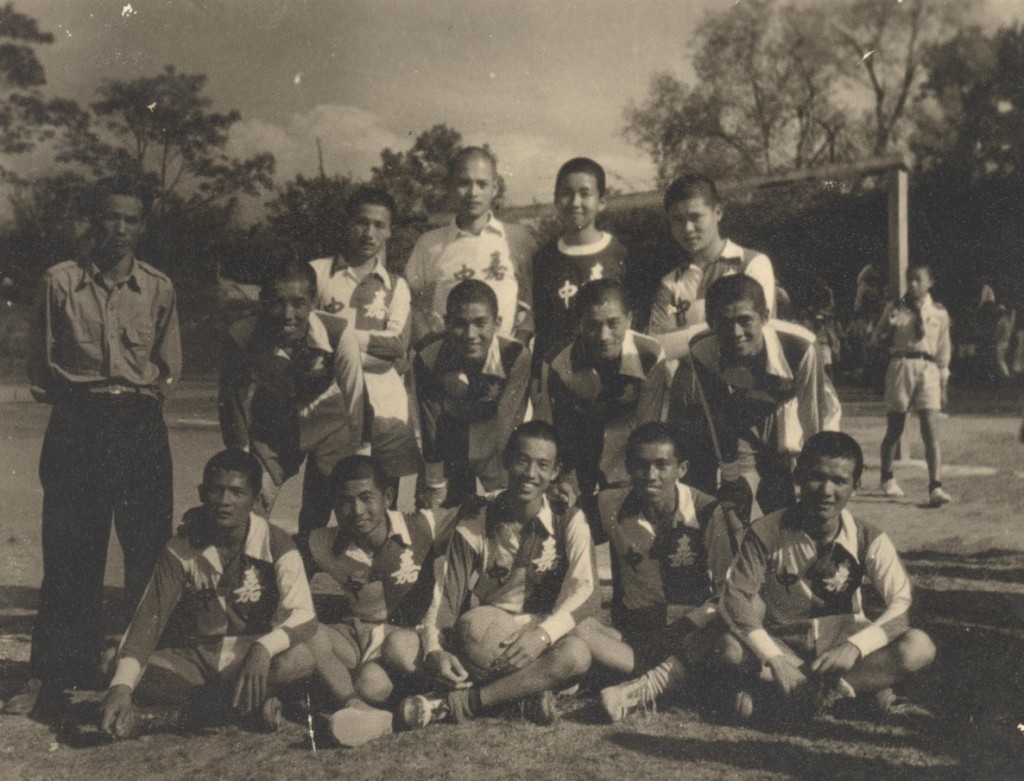
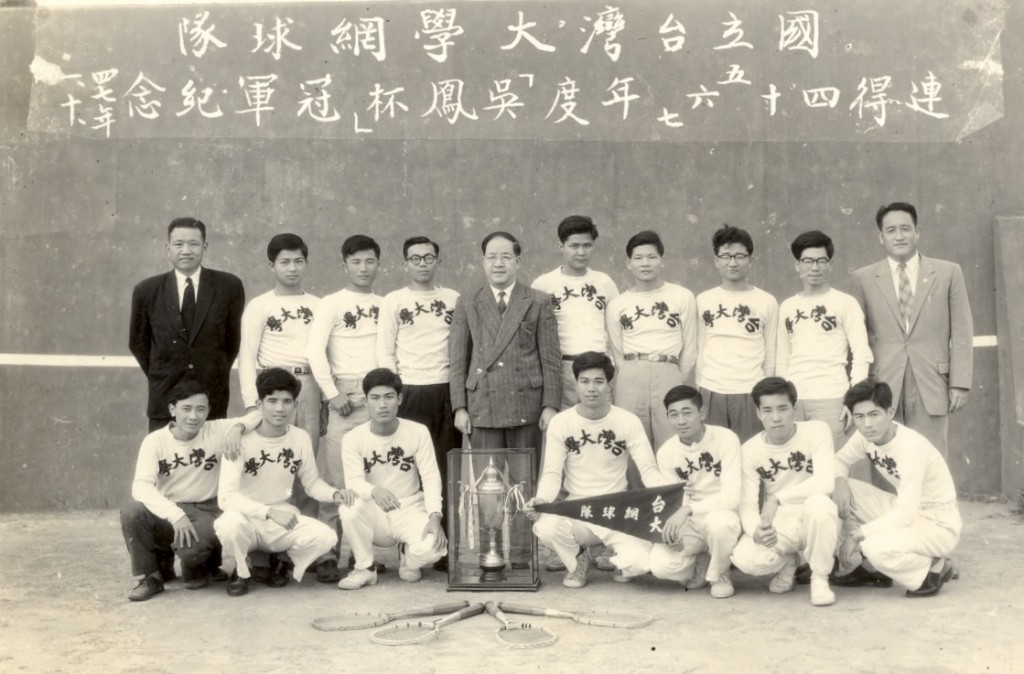
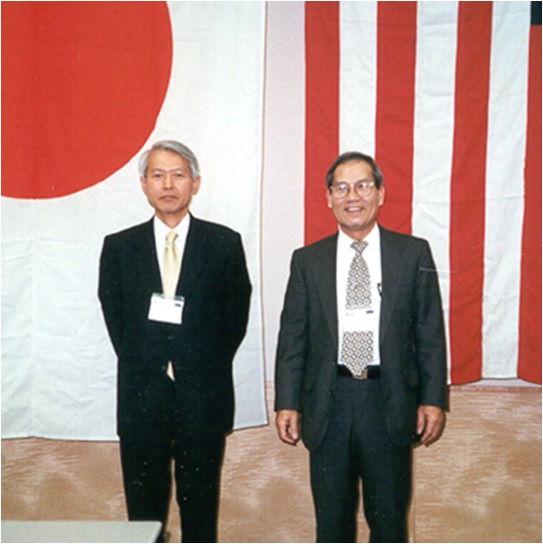
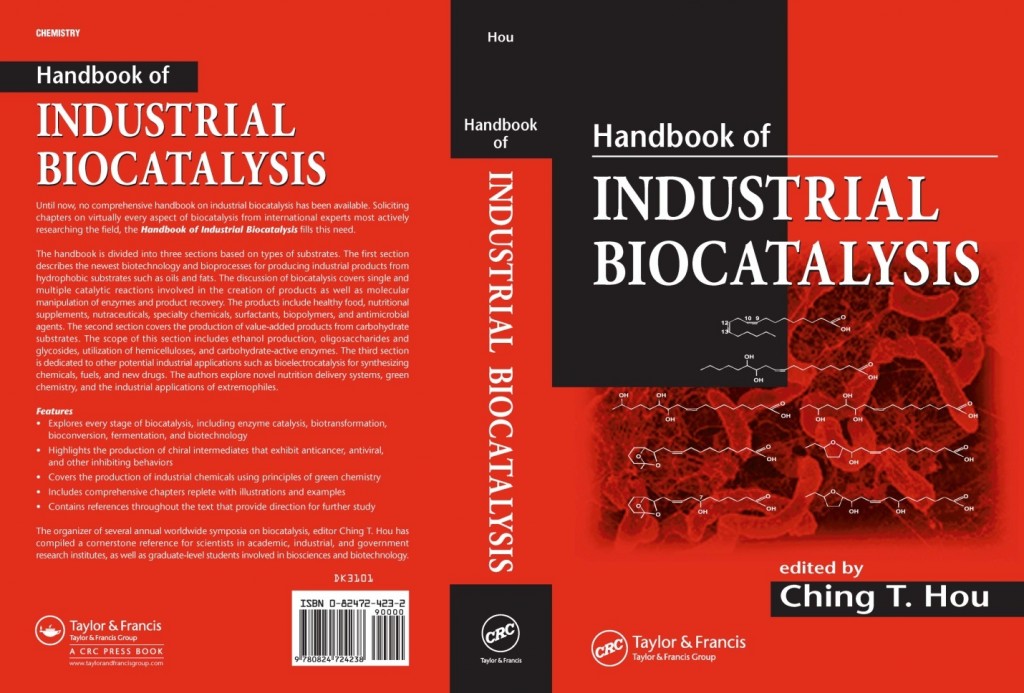
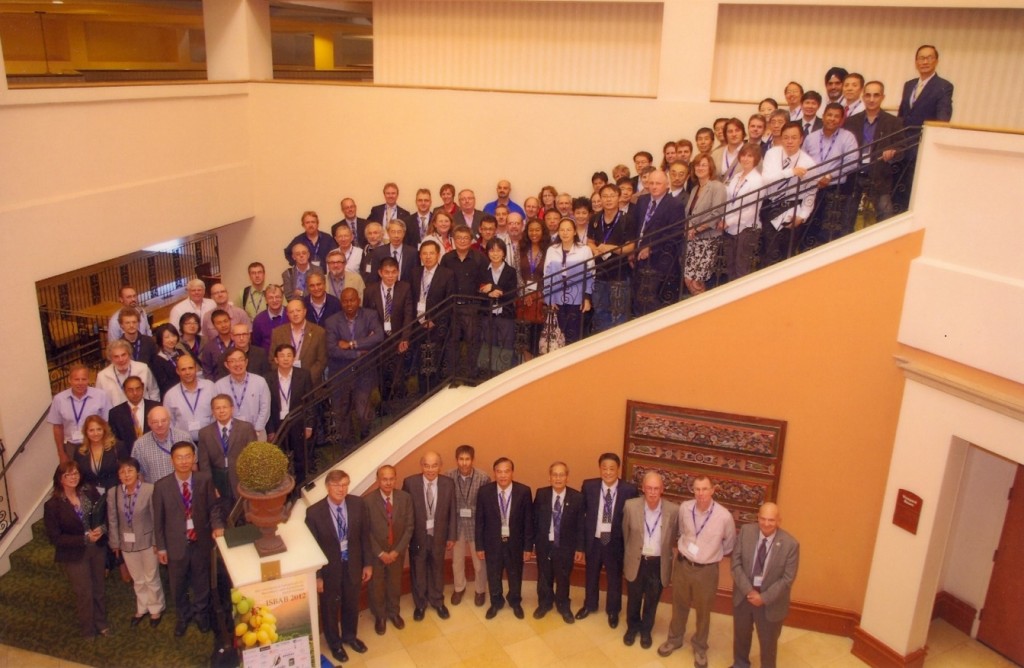
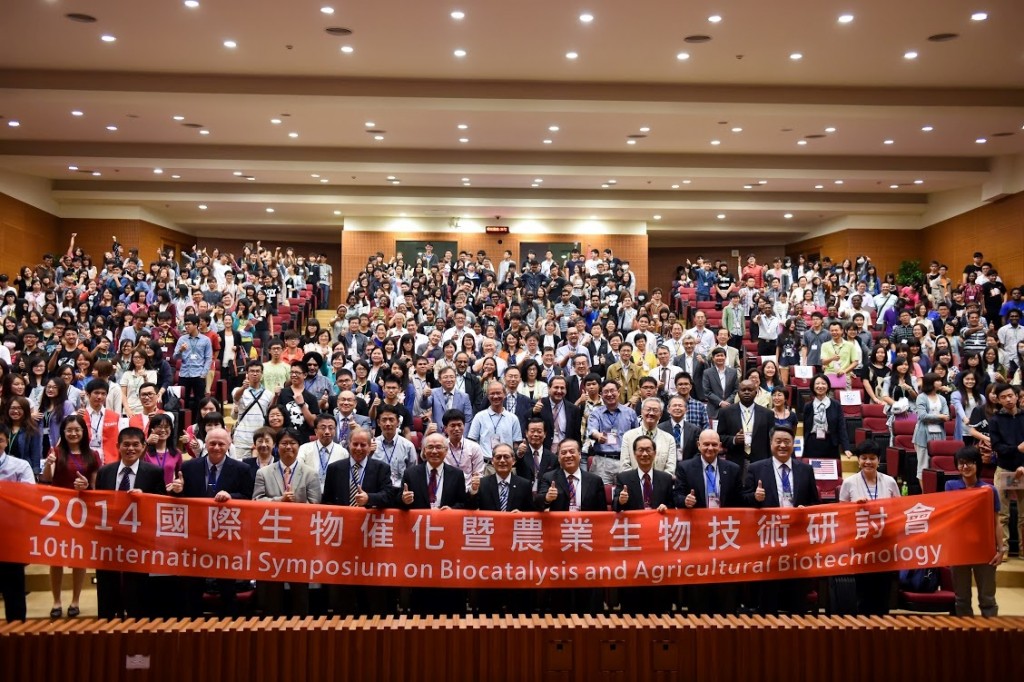
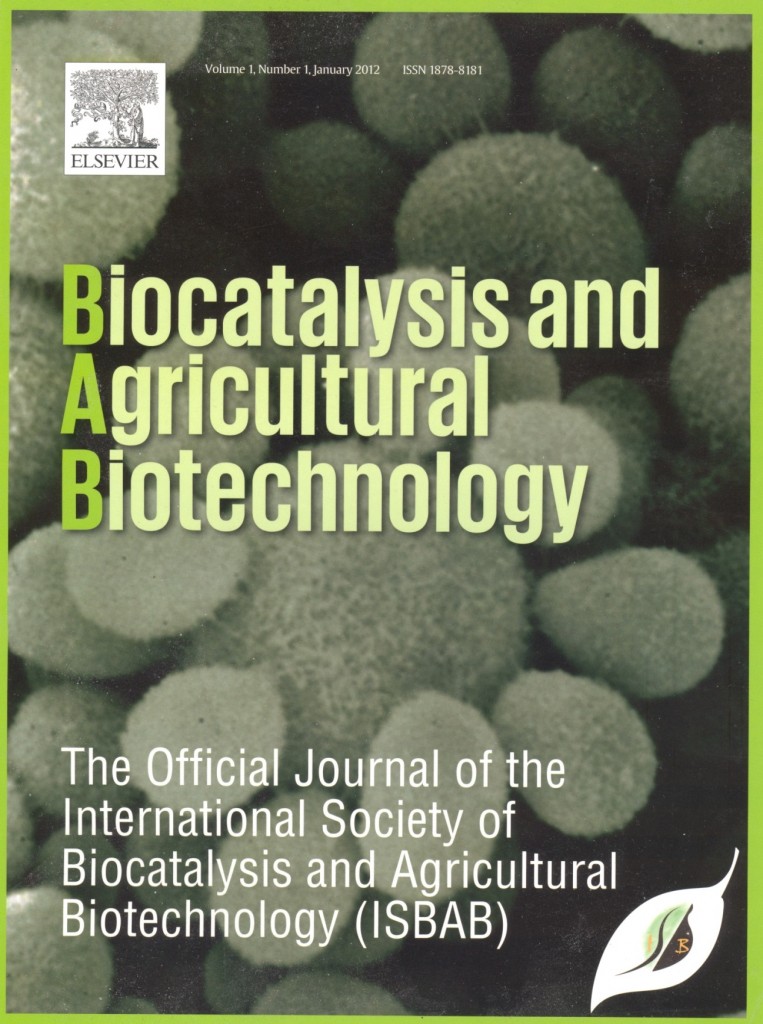
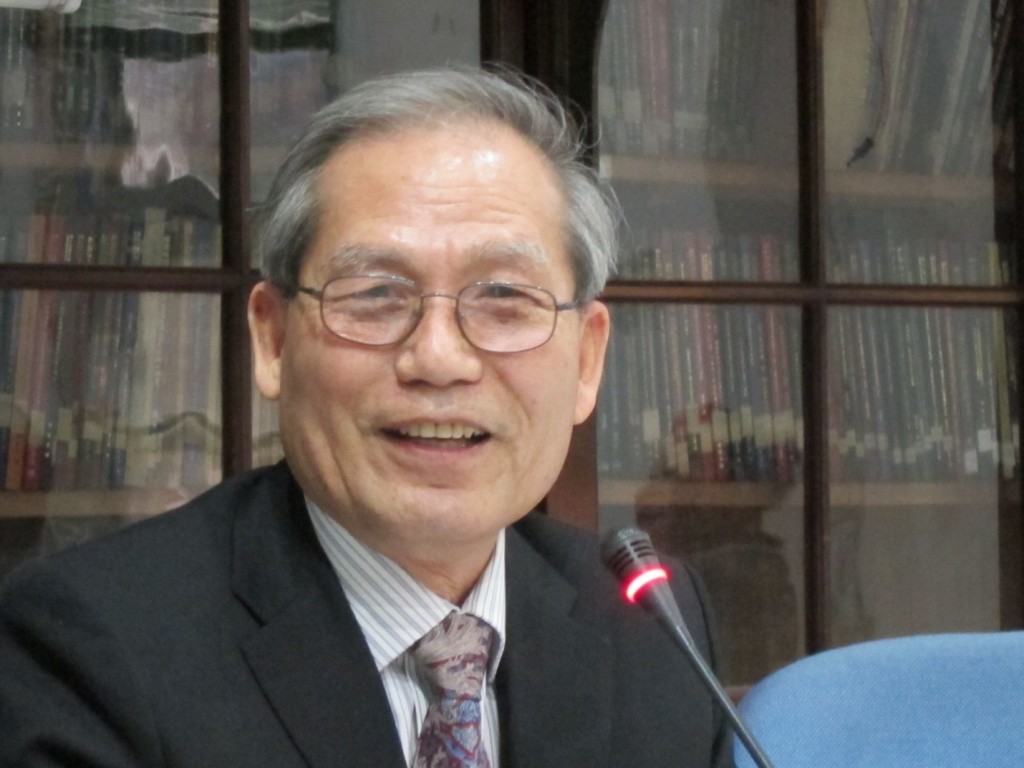
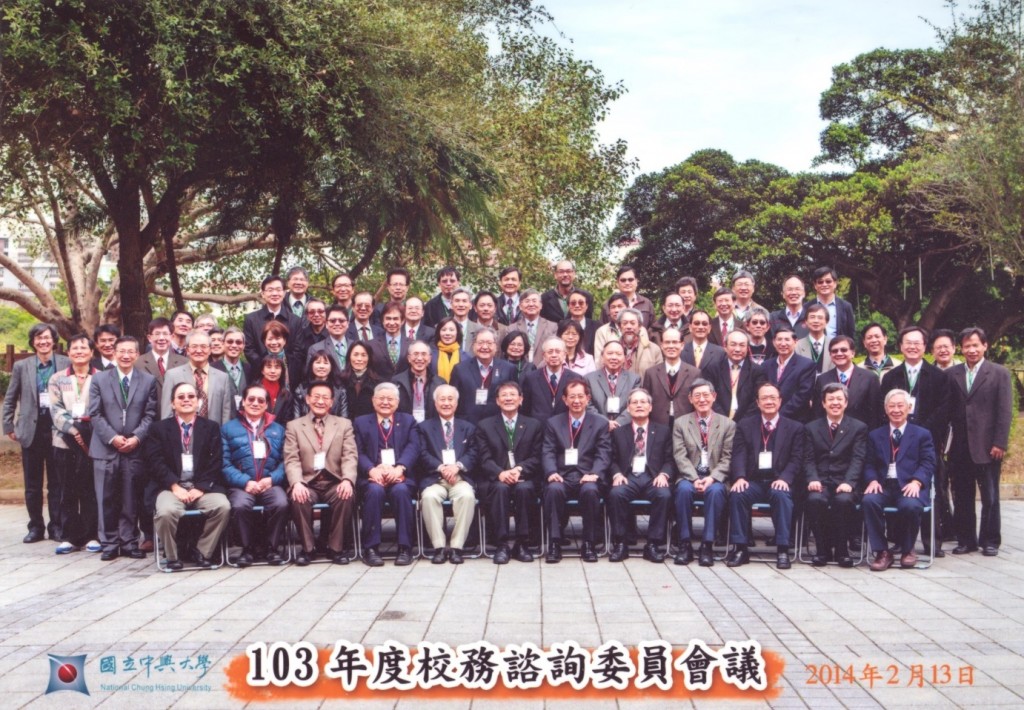
Author: Dr. Ching Tsang Hou (written on September 9, 2014 in Peoria, Illinois, USA).
Translated from: 183. 八十自述:出生在台灣 從日本人,中國人,到美國人/侯景滄/2015/01 by author
posted 1/11/2021


